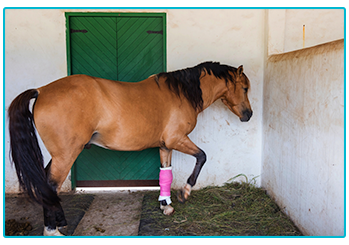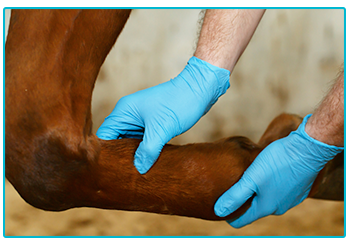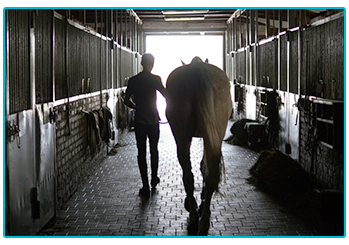Degenerative joint disease in horses, otherwise known as DJD or osteoarthritis, can be a common condition in ponies. One of the most frequent causes of lameness, it’s an illness that horse owners should be aware of, especially as it can be managed effectively if the right steps are taken. To help give you the lowdown on DJD, we’ve consulted our horse health expert to find out about the treatment and management of the condition. Read on to find out more!

What is DJD?
As its name suggests, degenerative joint disease is a chronic condition, involving the degeneration of the joints, usually gradually over time. It occurs when inflammatory mediators, which are naturally occurring chemicals in animals, are released within the joint capsule. This causes the cartilage and fluid within joints to break down, making movement of the joint more difficult, as well as painful.
How is DJD caused?

There are numerous ways your horse can develop DJD. It can develop as a result of injury or trauma, chip fractures and concussion. If your pony is prone to bearing weight unevenly, this can put them at an increased risk. Sometimes, however, degenerative joint disease can simply be the result of general wear and tear!
How can I recognise the symptoms?
The symptoms of DJD include lameness, muscle wastage, swollen joints and other swellings, a reduced range of movement in affected joints, loss of performance, and pain. DJD is normally diagnosed by a vet through observing the symptoms, although x-rays might also be used to assess the severity of the damage.
What treatments are available?

As DJD is degenerative, there is no cure, but there are ways of managing the condition and potentially slowing its progress. Intra-articular joint injections or non-steroidal anti-inflammatory drugs can be prescribed, as well as surgery and stem cell therapy amongst other medical options. Joint feed supplements such as glucosamine might also help. Keeping your horse’s weight down can ease the pressure on their joints, whilst regular, light exercise can help maintain their mobility.
If you have any questions about the condition, or think your horse might have developed DJD, make sure to ask your vet for advice. While degenerative joint disease is an ongoing issue, you should be able to carefully manage it, helping your pony enjoy life’s adventures to the full!
All content provided on this blog is for informational purposes only. We make no representations as to the accuracy or completeness of any information on this site or found by following any link on this site. We will not be liable for any errors or omissions in this information nor for the availability of this information. We will not be liable for any loss, injury or damage arising from the display or use of this information. This policy is subject to change at any time.


